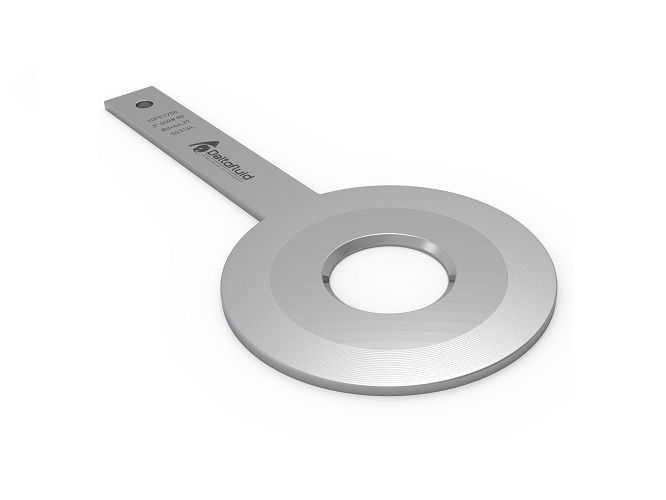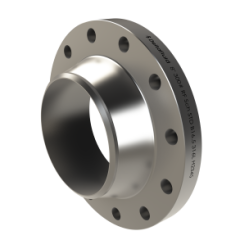Conical orifice plate
Recommended for low flow rates and / or viscous fluids
GENERAL DATA
- Standard: ISO / TR 15377.
- Mounting between flanges: ISO PN 2,5 to PN 420, ASME 150 # to 2500 #, others on consultation.
- Material: Standard: 304L / 316L stainless steel, others according to your application.
- Fluid: liquid, gas, steam.
- Diameter of pipes: from 25 to 500 mm.
- Accuracy: 2% of max flow.
- Repeatability of the measurement: 0.1%.
- Pressure taps: in the corners.
| ISO/TR 15377 | ||
|---|---|---|
| ReD | Reynolds number in pipework | 80 ≤ ReD ≤ 6.104 |
| D | Pipe interior diameter | 25 mm ≤ D < 500 mm |
| d | Orifice diameter | d > 6 mm |
| β | d/D | 0,1 ≤ β ≤ 0,316 |
| Ra | Upstream face roughness | Ra < 10⁴.d |
| e1 | Conical entry thickness | e1 = 0,084.d ± 0,003.d |
| e | Cylindrical part thickness | e = 0,021.d ± 0,003.d |
| E | Plate thickness | E ≤ 0,1.D |
| α | Upstream bevel angle | α = 45° ± 15° |
| t | Flatness tolerance | t < 0,005.(D - d - 2.e1)/2 |
You can find below our most frequently asked questions / answers.
If you do not find the answer you are looking for, please contact us either by phone at +33 (0)5.59.30.85.20 or via the contact form. We will respond as soon as possible.
Why use a conical entry plate rather than a sharp edge plate?
A sharp edge plate is not suitable for a viscous fluid or circulating at too slow speed. A conical inlet plate accepts fluids with a very low Reynolds number (up to 80).
To understand and make your choice between the different orifice plates, refer to the selection table.

